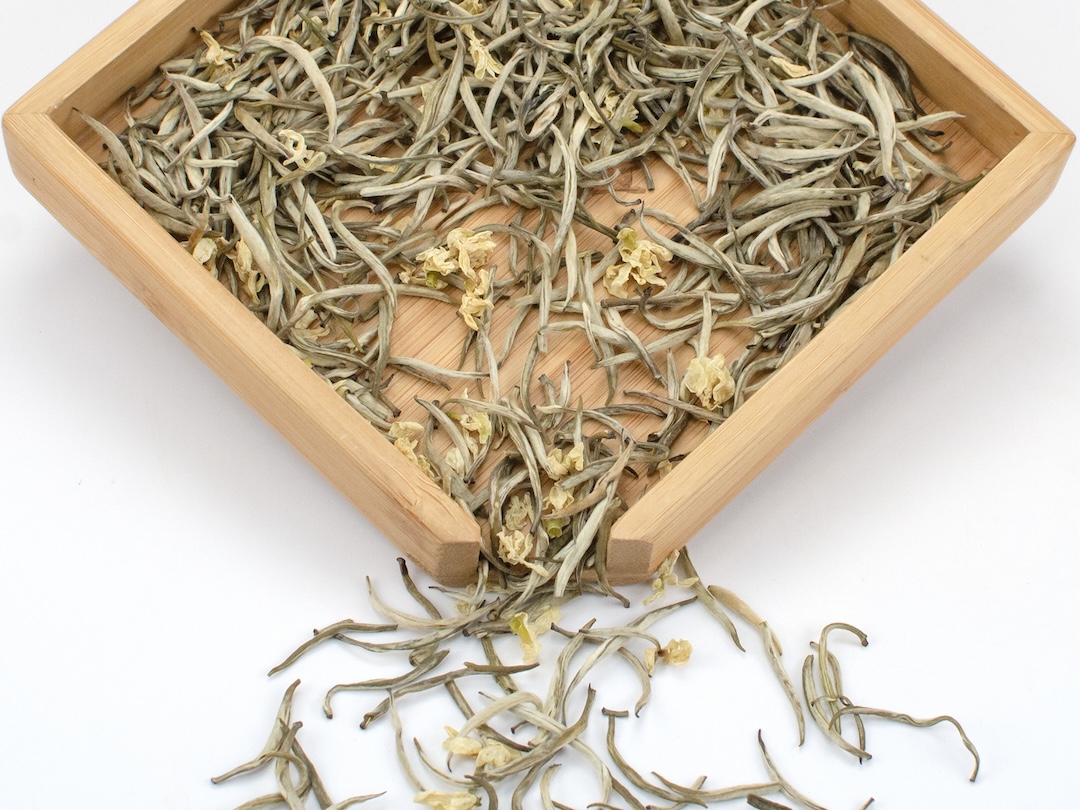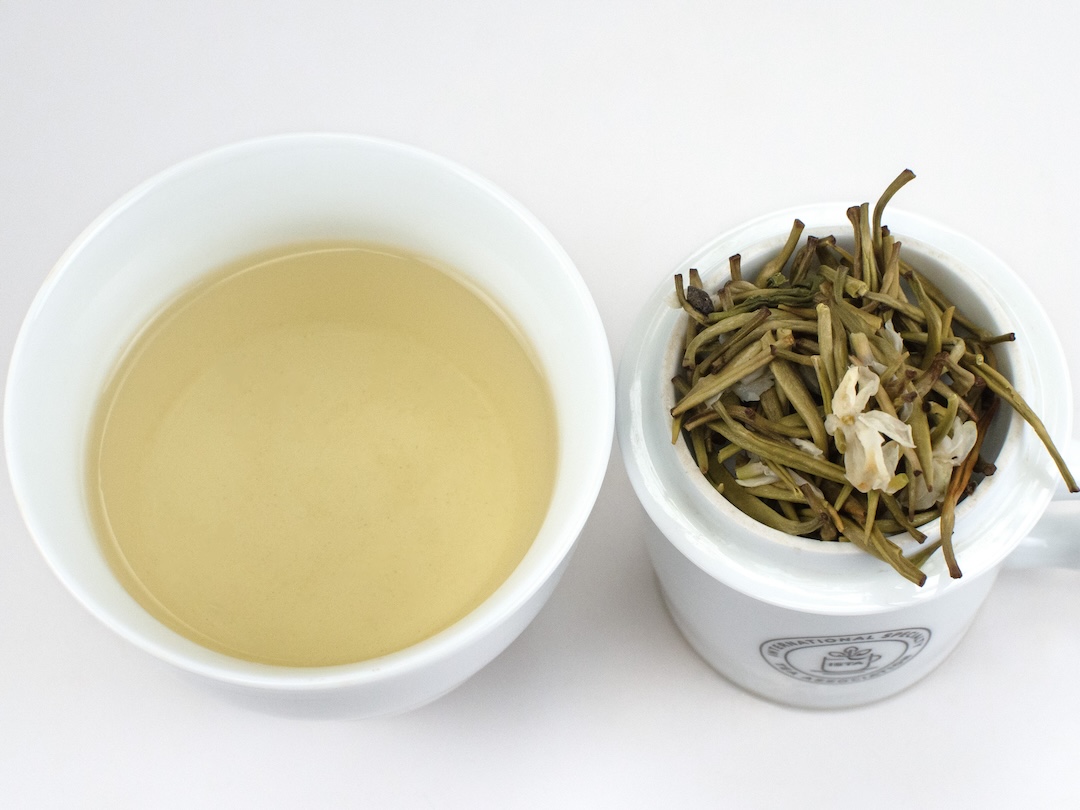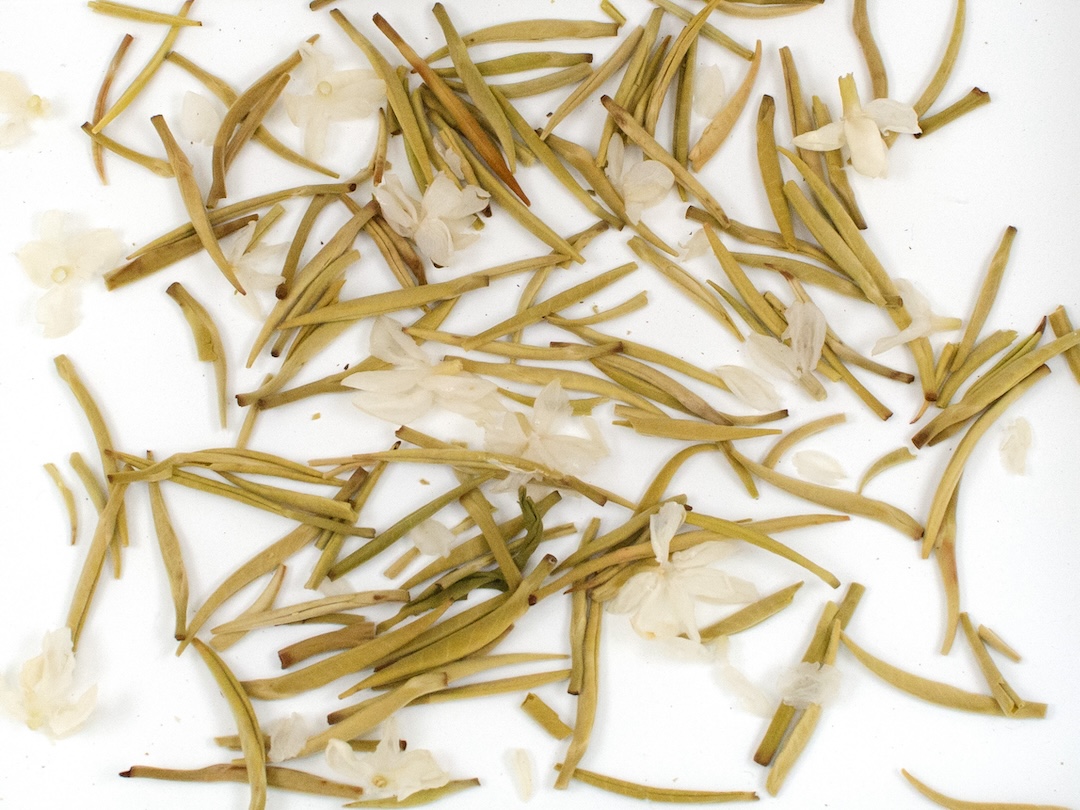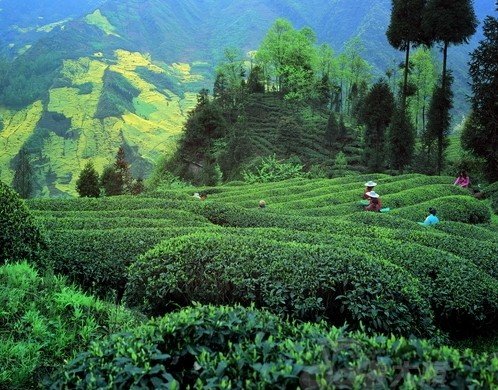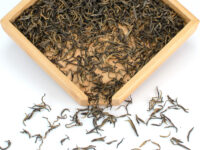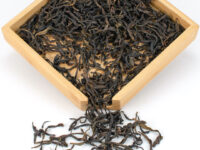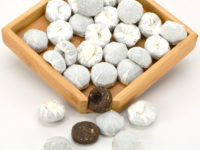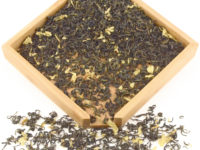Moli Yinzhen (Jasmine Needle)
Scented Tea 2024
The piercing, clean jasmine aroma of this tea blooms in the mouth like the flower itself, with a gradually increasing intensity and clarity as you drink. The heady florals balance well with the tea’s full yet gentle body. The jasmine scent enters the sinuses with the first sip and lingers alongside the persistent, complex flavors of heirloom tea bushes.
$21.00
- Tea Origin
- Mengding Mountain, Ya'an City, Sichuan Province, China; Jasmine from Sichuan Province
- Tea Bush
- Chuan Xiaozhong (Sichuan Small Leaf Heirloom Tea Bush), Dabai (Big White), Dahao (Big Hair)
- Tea Maker
- Luo Ping
- Harvest Time
- Late March (tea), June (jasmine)
- Plucking Standard
- One bud
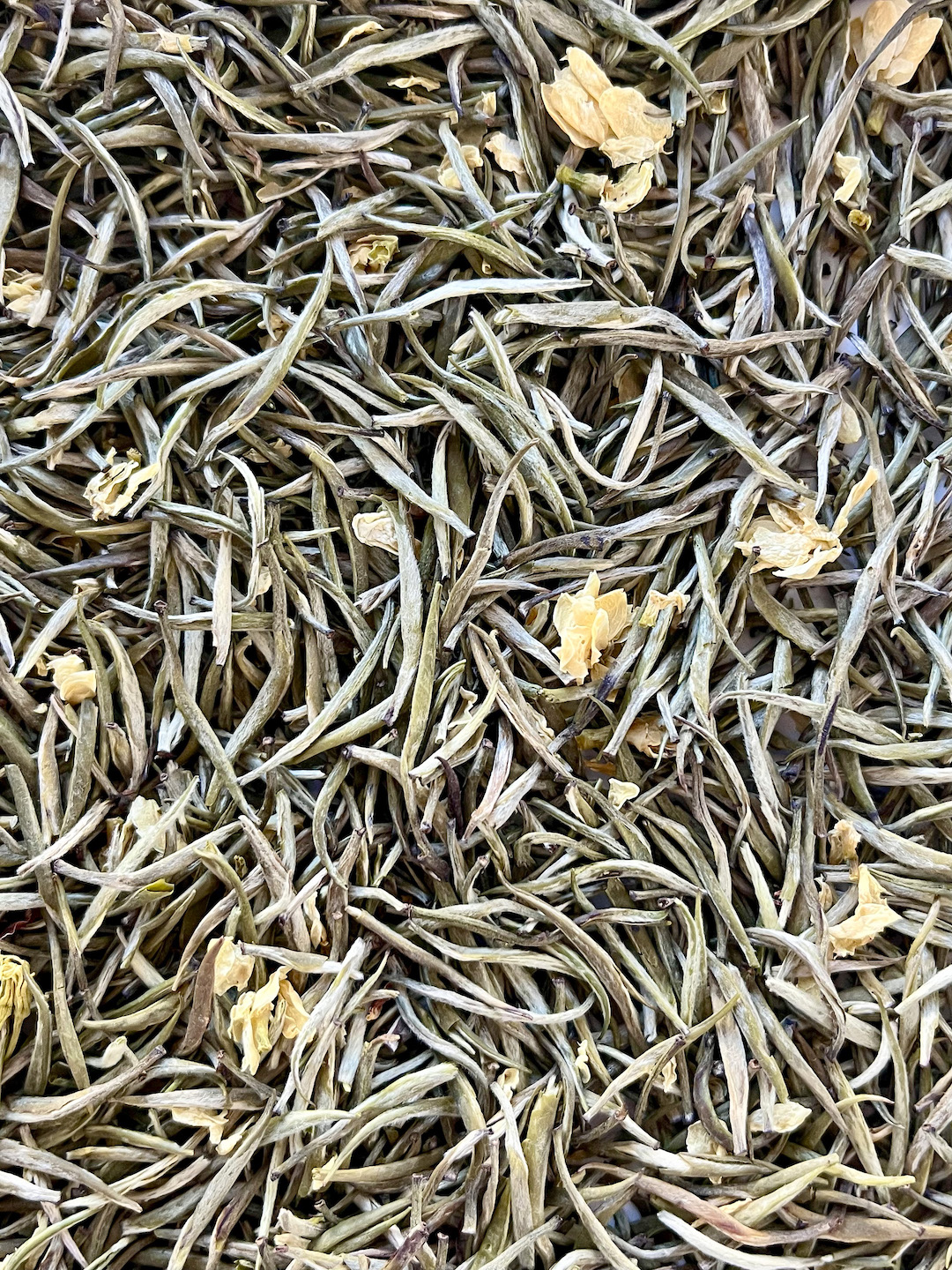 Jasmine Needle has heady jasmine aromatics that fill your mouth like a blooming flower, with a soft initial delivery and a gradual increase in intensity and clarity. Its piercing aroma is effervescent with the sweetness of jasmine blossoms. The body of the brew remains full yet gentle, building up layers of flavor as the single buds infuse. With both powerful presence and impeccable easy-drinking softness, this is one of the most beautifully balanced examples of jasmine tea we’ve ever carried.
Jasmine Needle has heady jasmine aromatics that fill your mouth like a blooming flower, with a soft initial delivery and a gradual increase in intensity and clarity. Its piercing aroma is effervescent with the sweetness of jasmine blossoms. The body of the brew remains full yet gentle, building up layers of flavor as the single buds infuse. With both powerful presence and impeccable easy-drinking softness, this is one of the most beautifully balanced examples of jasmine tea we’ve ever carried.
The base of this tea is composed of pristine single tea buds from the first spring harvest before Qingming, grown in a mixed garden of local heirloom tea bushes and seed-grown naturalized Dabai and Dahao bushes originally from Fujian. These bushes have been growing in Mengding Mountain’s unique environment for decades. As they’ve done so, they have adjusted to their new environment by developing characteristics resembling the adaptations that make native Sichuan cultivars well-suited to their home. Over time, the Fujian bushes have also cross-pollinated and hybridized with those local Sichuan tea plants. As a result of their mixed ancestry and adaptive history, these seed-grown heirloom bushes clearly resemble Fujian’s Silver Needle tea in the large size of their shining fuzzy tea buds and their sweet flavor, but also possess that distinctive richness of flavor that makes Sichuan teas stand out among others.
Making Traditional Jasmine Scented Tea
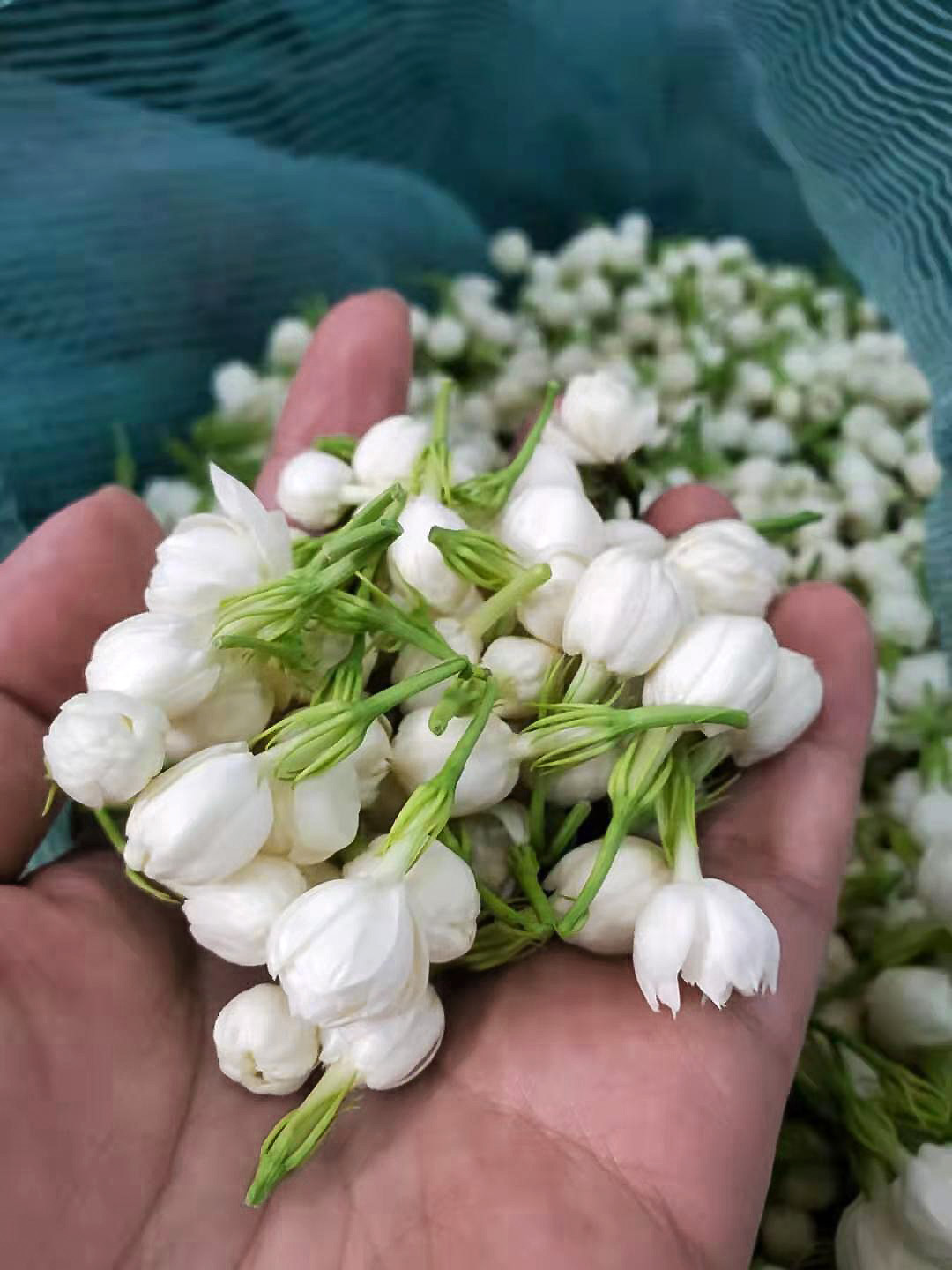
A good green tea is traditionally used as the base for high-end jasmine scented tea. Creating a balance between the quality of the tea base and the quality of the flowers picked is critical to the overall quality of the finished scented tea.
During the spring tea harvest season from the end of March to early April, high-quality green tea is plucked, processed, and dried until less than 10% of its moisture remains. It is then kept in storage until the flowers for scenting are in season and about to bloom.
Jasmine blossoms are ready to be picked in June. Since they bloom at night between 7:00 and 8:00 pm, they are harvested the afternoon before the scenting process is to take place. They will continue to slowly open during the scenting process. In the days prior to the jasmine harvest, the tea farmers will move the completed green tea to tea factories closer to the jasmine fields so that the fresh flowers can be mixed with them immediately.
High-end scented jasmine teas like Moli Yinzhen use a higher proportion of freshly-bloomed flowers to tea leaves. A mixture of 60% tea with 40% fresh flowers are blended together in a pile about 1-2 ft (~31-61 cm) high and left to rest to allow the fragrance to permeate the tea leaves. The scenting process generates heat over time, and the pile needs to be spread out often to cool off. After 5 to 6 hours, the flowers will turn yellow, wither, and expend their fragrance, and a machine will be used to separate the flowers from the tea.
As the scenting process continues, the tea leaves are repeatedly piled together with a fresh batch of new flowers, and a small amount of water is absorbed by the leaves. The tea needs to be re-fired or dried to remove excess moisture. These steps are repeated at least three or four times until the fragrance of the blossoms is fully developed and absorbed completely into the tea. After the final scenting is complete, a small amount of dried white jasmine flowers and petals may be added to the tea for decoration. This tea was processed and scented in Sichuan, using locally grown flowers, which is a rare practice. Scented tea is usually finished in a completely different area or province from where it was initially processed.
No chemical fertilizer, pesticide, or herbicide was used in the production of this tea. Click here to read more about our promise to fair trade and the environment.

